#dreweatts
Text
An Impressive Edwardian Aquamarine and Diamond Brooch

"Introducing an impressive Edwardian aquamarine and diamond brooch formerly the property of Nancy Witcher Langhorne Astor, Vicountess Astor
The pediment with a step cut aquamarine with canted corners, estimated to weigh 87.82 carats, within a millegrained surround of eight cut diamonds, approximately 0.76 carats total, suspending a large briolette aquamarine drop, 5.4cm long, with a banded and pierced scrolled rose cut diamond set cap, suspended from a rose cut diamond bale.
The brooch is a stunning 10.8cm in total length and is estimated at £15,000-20,000 (+fees).
Excellent depth of colour
This classic Belle Epoque jewel was made in 1910, it is however unsigned, and was possibly made in either the US or UK. The mounting is platinum fronted gold, the strength of which allows for a minimal, light setting so showing off the aquamarines to their best effect.
These stones are of top gem quality (probably Brazilian) with excellent depth of colour; today aquamarines such as these would be designated ‘Martha Rocha’ in colour. Martha Rocha, was a Brazilian beauty queen in the 1950s, and she was known for her brilliant, captivating eyes."
Dreweatts
#brooch#edwardian jewelry#british aristocracy#aquamarine#aquamarines#diamond#diamonds#tiara crown#tiaras crowns#tiarascrowns#tiaracrown#dreweatts
150 notes
·
View notes
Text

Octave Guillonnet (1872-1967) - Benediction de la mer, Capri
Oil on canvas. 27.75 x 35.25 inches, 71 x 90 cm.
Estimate: £1,500-2,500.
Sold Dreweatts, Newbury, Berks, 13 March 2024 for £6,500 + B.P.
96 notes
·
View notes
Text
Dreweatts Auction
Dreweatts' Fine Jewellery, Silver, Watches and Objects of Vertu auction on March 22nd will feature one tiara that belonged to a French noble family.
Marquise de Chambrun's Opal & Ruby Tiara - estimate 12,000 - 18,000 GBP
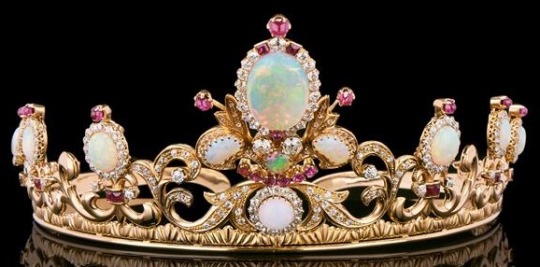
youtube
*Both the lot notes and the video state that there is only one other known opal tiara which is definitely not true. Check out my opal tag here.
142 notes
·
View notes
Text

Clara Estelle Sipprell :: Still life, ca. 1935. Gelatin silver print. Dreweatts & Bloomsbury 11-2015 / LL/64307
#clara sipprell#clara e. sipprell#still life#stillleben#nature morte#1930s#women artists#women photographers#vase of flowers
65 notes
·
View notes
Text
UK kitchen vase turns out to be $1.8 million Qing-dynasty treasure

A royal blue 18th-century Chinese vase decorated with gold and silver, which sat in a U.K. kitchen for several years, just sold at auction for about $1.8 million after historians realized it had once belonged to an emperor.
However, the vase's unclear history — combined with the looting of Chinese palaces in the 19th century — raises ethical concerns, according to an expert who was not involved with the sale.
The vase is large, about 2 feet (0.6 meters) tall, and it is marked with a symbol associated with the Qianlong emperor — the sixth emperor of the Qing dynasty, the country's last imperial dynasty — who ruled China from 1735 to 1795, according to a statement released by the auction company Dreweatts, which sold the vase on May 18. Read more.
438 notes
·
View notes
Photo

Joan Carlile (English, c. 1606-1679): Portrait of Anne, Philadelphia and Thomas Wharton, later 5th Lord Warton (via Dreweatts)
#Joan Carlile#women artists#women painters#art#painting#early women artists#early women painters#portrait#seventeenth century#english painters
46 notes
·
View notes
Text
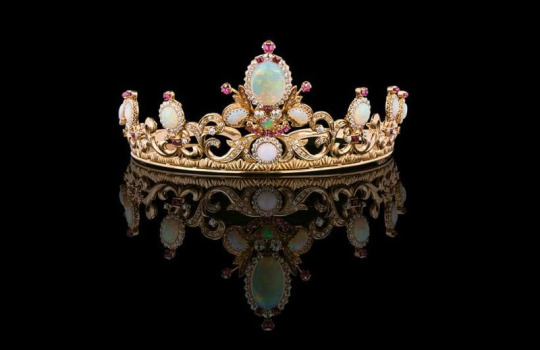

Muriel, Marquise de Chambrun wearing the tiara.
An extremely rare opal tiara from the family of the Late Jean Pierre François Joseph Pineton de Chambrun, Marquis de Chambrun, Marquis d'Amefreville (1903-2004) and his second wife Muriel.
LONDON.- Dreweatts will offer an extremely rare opal tiara from the family of the Late Jean Pierre François Joseph Pineton de Chambrun, Marquis de Chambrun, Marquis d'Amefreville (1903-2004) and his second wife Muriel, Marquise de Chambrun. Jean Pierre Pineton was the eldest son of French politician and diplomat Charles Louis Antoine Pierre Gilbert Pineton de Chambrun (1865-1954) and his American wife, Margaret Rives Nichols (1872-1949). Jean Pierre married his second wife Muriel in married in 1963 and they spent their 40-year marriage between France, the United States and the Algarve in Portugal.
The de Chambrun family has a prominent history as French politicians in the French Senate and French Chamber of Deputies and were direct descendants of Gilbert du Motier, Marquis de Lafayette (1757-1834), the French aristocrat and army officer who commanded American troops to victory in the American War of Independence. He was also a key figure in the French Revolution in 1789 and the July Revolution of 1830 and served in French parliament. Such was his impact that he was considered a national hero in both countries and gained the title of ‘Hero of Two Worlds’.
Jean Pierre and Muriel toured America lecturing about Lafayette and his role in the American Revolution and War of independence. Muriel also became a celebrated poetess and won several awards including Ohio Poet of the year in 1976 for her book of poems Sudden Spring and an award from Cincinnati University in 1970 for her first book Salisbury Cathedral. Jean Pierre and Muriel were fêted by American society and acknowledged by several American President's including Ronald Reagan, Bill Clinton and George Bush Junior for their work in promoting Franco-American relations.
Although profoundly deaf, Jean Pierre had studied biochemistry at the Institut Pasteur, and art at the Horace Vernet school. As a member of at the Cercle de l'Union Artistique in France, Jean Pierre became an acclaimed painter and designer of jewellery, wrought iron and crystal for the renowned firm Baccarat. With his background in jewellery, it is thought that the tiara was most probably designed by him. The tiara is exceptionally rare as it is set with opals, hardly ever seen in period tiaras, due to the stone’s fragility and also as some believed that opals held a strange power, that could bring bad luck to its wearer. This superstition was picked up in the British press, however it was eventually dismissed after it was a firm favourite with Queen Victoria, who during her reign owned multiple pieces of jewellery set with opals, which were said to have been the favourite gemstone of her husband, Prince Albert.
“To have a period tiara set with opals is extremely rare, as the opal stone is so fragile, with their composition mainly consisting of water and silica gel”, says Deputy Chairman and International Head of Jewellery, Silver and Watches at Dreweatts. “Of the very few other tiaras set with opals, is the Princess Marie of Denmark opal tiara, an exuberant Art Nouveau creation of large, towering opal set floral sprays. It has not been seen being worn in public since the wedding of King Harald V and Queen Sonja of Norway in 1968.���
The tiara in the sale is an exuberant piece of mid-20th century jewellery design. Opals are highly attractive stones due to their colour play, as they show all the colours of the rainbow. When rotated in light, one can see different flashes of colour, which are caused by the microscopic silica spheres in the stone. The most sought-after colours are red and green. Opals were traditionally found in Eastern Europe, in the Czech Republic and Slovakia. However, in the 1870s, they were discovered in Australia. Since then Australia has contributed to around 90% of the global output of precious opals. The best opals are found in Lightning Ridge, with others come from Queensland and New South Wales. A small percentage of stones also come from Ethiopia, America and Mexico, however these are not as commercially viable as the Australian examples.
The opals found in this stunning tiara are of exceptional quality and we can therefore assume that these originated from Australia.” says James Nicholson. They are set into 18 carat gold scrolled framework, complimented by circular cabochon, circular cut and step cut ruby accents, as well as rose cut and old mine cut diamonds, adding an extra sparkle. Adding to the uniqueness of this particular tiara, it is intended to be worn more like an ‘alice band’ across the middle of the head, rather than at the front. This adds significant height to it, making it a fabulous statement piece.
Courtesy Alain Truong
10 notes
·
View notes
Photo


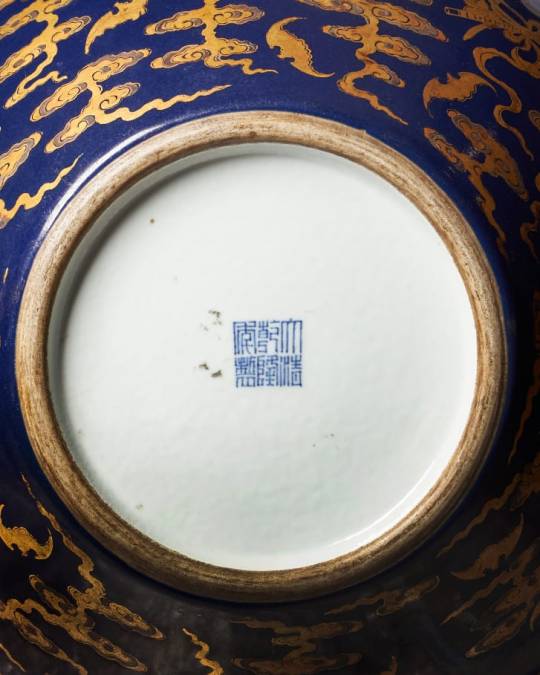
Rare 18th-Century Chinese Vase Kept in Kitchen Sells for $1.8 Million
A rare Chinese vase dating from the 18th century has sold for nearly £1.5 million ($1.8 million) at auction.
The gilded blue artifact was initially valued at £150,000 ($186,000), according to Dreweatts, the English auction house that handled the sale.
The seller inherited the vase from his father, a surgeon, who bought it in the 1980s for a few hundred pounds, Dreweatts said in a statement. The seller was unaware of its value, and so kept it in the kitchen, where it was spotted by an expert.
Measuring two feet in height, the porcelain vase is embellished with a six-character seal mark characteristic of the Qianlong era (1736-1795) along its base, the auction house said.
It was made for the court of the Qianlong Emperor -- the sixth emperor of the Qing dynasty -- and would have been crafted using innovative heating techniques to achieve its blue, gold and silver coloring, Dreweatts added.
The vase would need to have been fired at a temperature of nearly 2,200 degrees Fahrenheit (about 1,200 celsius) to achieve the cobalt blue shade, while the interior turquoise tint and the exterior gold and silver colors would have been created in a kiln suited for enamels, the auction house said.
The Chinese name for this kind of vase is "tianqiuping," which translates to "heavenly globe vase" and describes its spherical shape. Dreweatts said there have not been any other tianqiuping vases documented with the same designs in gold and silver, making it extremely rare.
Mark Newstead, a specialist consultant for Asian ceramics and artworks at Dreweatts, said in the statement that bidding interest came from China, Hong Kong, the US and the UK.
"The result shows the high demand for the finest porcelain produced in the world. A fabulous result and we are privileged to have sold this at Dreweatts," he added.
A number of other rare artifacts recovered from obscurity have earned high sale prices recently.
In March last year, a 15th-century blue-and-white Chinese bowl bought at a yard sale for $35 sold for $721,800 at auction.
A few months later, a 16th-century Italian dish discovered in a drawer fetched more than $1.7 million at auction -- 10 times its original estimate.
By Sana Noor Haq and Amarachi Orie.
#Rare 18th-Century Chinese Vase Kept in Kitchen Sells for $1.8 Million#qianlong emperor#qianlong era#ancient artifacts#history#history news#ancient history#ancient culture#ancient civilizations
26 notes
·
View notes
Text

youtube
Dreweatts is delighted to offer an extremely rare opal tiara from the family of the Late Jean Pierre François Joseph Pineton de Chambrun, Marquis de Chambrun, Marquis d’Amefreville (1903-2004) and his second wife Muriel, Marquise de Chambrun. Jean Pierre Pineton was the eldest son of French politician and diplomat Charles Louis Antoine Pierre Gilbert Pineton de Chambrun (1865-1954) and his American wife, Margaret Rives Nichols (1872-1949). Jean Pierre married his second wife Muriel in married in 1963 and they spent their 40-year marriage between France, the United States and the Algarve in Portugal.
The de Chambrun family has a prominent history as French politicians in the French Senate and French Chamber of Deputies and were direct descendants of Gilbert du Motier, Marquis de Lafayette (1757-1834), the French aristocrat and army officer who commanded American troops to victory in the American War of Independence. He was also a key figure in the French Revolution in 1789 and the July Revolution of 1830 and served in French parliament. Such was his impact that he was considered a national hero in both countries and gained the title of ‘Hero of Two Worlds’.
Jean Pierre and Muriel toured America lecturing about Lafayette and his role in the American Revolution and War of independence. Muriel also became a celebrated poetess and won several awards including Ohio Poet of the year in 1976 for her book of poems Sudden Spring and an award from Cincinnati University in 1970 for her first book Salisbury Cathedral. Jean Pierre and Muriel were fêted by American society and acknowledged by several American President’s including Ronald Reagan, Bill Clinton and George Bush Junior for their work in promoting Franco-American relations.
Although profoundly deaf, Jean Pierre had studied biochemistry at the Institut Pasteur, and art at the Horace Vernet school. As a member of at the Cercle de l’Union Artistique in France, Jean Pierre became an acclaimed painter and designer of jewellery, wrought iron and crystal for the renowned firm Baccarat. With his background in jewellery, it is thought that the tiara was most probably designed by him. The tiara is exceptionally rare as it is set with opals, hardly ever seen in period tiaras, due to the stone’s fragility and also as some believed that opals held a strange power, that could bring bad luck to its wearer. This superstition was picked up in the British press, however it was eventually dismissed after it was a firm favourite with Queen Victoria, who during her reign owned multiple pieces of jewellery set with opals, which were said to have been the favourite gemstone of her husband, Prince Albert.
“To have a period tiara set with opals is extremely rare, as the opal stone is so fragile, with their composition mainly consisting of water and silica gel”, says Deputy Chairman and International Head of Jewellery, Silver and Watches at Dreweatts. “Of the very few other tiaras set with opals, is the Princess Marie of Denmark opal tiara, an exuberant Art Nouveau creation of large, towering opal set floral sprays. It has not been seen being worn in public since the wedding of King Harald V and Queen Sonja of Norway in 1968.”
The tiara in the sale is an exuberant piece of mid-20th century jewellery design. Opals are highly attractive stones due to their colour play, as they show all the colours of the rainbow. When rotated in light, one can see different flashes of colour, which are caused by the microscopic silica spheres in the stone. The most sought-after colours are red and green. Opals were traditionally found in Eastern Europe, in the Czech Republic and Slovakia. However, in the 1870s, they were discovered in Australia. Since then Australia has contributed to around 90% of the global output of precious opals. The best opals are found in Lightning Ridge, with others come from Queensland and New South Wales. A small percentage of stones also come from Ethiopia, America and Mexico, however these are not as commercially viable as the Australian examples.
“The opals found in this stunning tiara are of exceptional quality and we can therefore assume that these originated from Australia.” says James Nicholson. They are set into 18 carat gold scrolled framework, complimented by circular cabochon, circular cut and step cut ruby accents, as well as rose cut and old mine cut diamonds, adding an extra sparkle. Adding to the uniqueness of this particular tiara, it is intended to be worn more like an ‘alice band’ across the middle of the head, rather than at the front. This adds significant height to it, making it a fabulous statement piece. It is estimated to fetch of £12,000-£18,000 when it goes under the hammer in Dreweatts Fine Jewellery, Silver Watches and Object of Vertu sale on March 22, 2023.
Opal tiaras are extremely rare, and only one other tiara set with opals is known. The Princess Marie of Denmark opal tiara was an exuberant Art Nouveau creation of large, towering opal set floral sprays. The tiara was re-set by Princess Marie's daughter-in-law Princess Viggo, into a simpler diadem. This opal diadem was passed down to the Count and Countess Flemming of Rosenborg, and has not been seen being worn in public since it was last worn at the wedding of King Harald V and Queen Sonja of Norway in 1968.
The present lot is an exuberant piece of mid 20th century jewellery design. Although unmarked, it is probably made in Northern Italy, and with his background in jewellery, it is likely that it was designed by Jean Pierre.
Opals are rarely found in tiaras due to the fragility of the stone, with their composition mainly made up of water and silica gel. They are highly prized due to their colour play, showing all the colours of the rainbow. When rotated in light, one can see different flashes of colour, which are caused by the microscopic silica spheres in the stone. The most sought after colours are red and green.
Opals were traditionally found in Eastern Europe, in the Czech Republic and Slovakia. However, in the 1870s, they were discovered in Australia. Since then Australia has contributed to around 90% of the global output of precious opals. The best opals are found in Lightning Ridge, with others coming from Queensland and New South Wales. A small percentage of stones also come from Ethiopia, America and Mexico, however these are not as commercially viable as the Australian examples.
The opals found in the present lot are of exceptional quality, and so we can be fairly certain that these originated from Australia. They are set into 18 carat gold scrolled framework, complimented by circular cabochon, circular cut and step cut ruby accents, as well as rose cut and old mine cut diamonds, adding an extra sparkle.Adding to the uniqueness of this tiara, it is intended to be worn more like an alice band across the middle of the head, rather than at the front. This adds significant height to it, making it a real statement piece.
3 notes
·
View notes
Photo

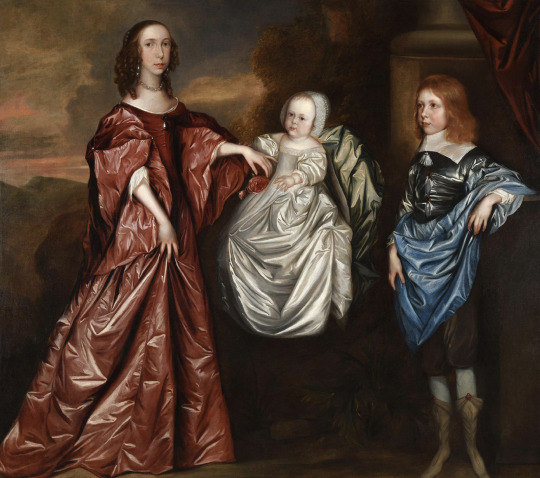

Lady in a silver dress by the circle of Sir Peter Lely (Dreweatts - 26May22 auction Lot 29). From invaluable.com-auction-lot-circle-of-sir-peter-lely-british-1618-1680-portra-c-68e4df7b01 2726X3505 @150 1.6Mj. Removed spots with Photoshop.
ca. 1665 Anne, Philadelphia, and Thomas Wharton attributed to Joan Carlile (Dreawatts 26May22 auction Lot 35). Removed navigation marks & spots w P'shop 3876X3434 @150 2.8Mj.
"1690" Called Pauline de Grignan, Marquise de Simiane en Diane chasseresse attributed to Jean Nocret (location ?). From tumblr.com/blog/view/hildegardavon/681437354612948992; enlarged to fit screen 1178X1400 @72 578kj.
#Baroque fashion#Louis XIV fashion#Lely#straight hair#side curl coiffure#chignon#modesty piece#lace modesty piece#straight neckline#wrap#three-quarter length puffed outer sleeves#clasps#puffed under-sleeves#brooch#1660s fashion#Joan Carlile#scoop neckline#elbow-length puffed sleeves#elbow-length close under-sleeves#A-line skirt#Pauline de Grignan#Marquise de Simiane#Jean Nocret#allegorical portrait#off shoulder straight neckline#sheer bertha#clasp#sheer sleeves#full sleeves
11 notes
·
View notes
Text
Ming Dynasty Box That Sat In An Attic For Decades Sells For $358,000
— Jack Guy, CNN | Tuesday May 23, 2023

A 15th century Chinese box which went unnoticed for decades has sold for £288,000 (about $358,000), smashing its expected price at auction.
The box was bought for just £19 ($24) in 1946 and was expected to fetch between £6,000 and £10,000 ($7,400 and $12,400) when it went under the hammer last week, according to Dreweatts auctioneers.
The piece was created during the 1430s in the Imperial workshops near the Forbidden City in Beijing, auctioneers said. It bears the marks of Xuande, the fifth Emperor of the Ming Dynasty (1426-1435).
It is one of only five known in the world, according to the auctioneers, based in Berkshire, southern England. Three of the five pieces are in museums or institutional collections, Dreweatts added, and one is in a private collection.
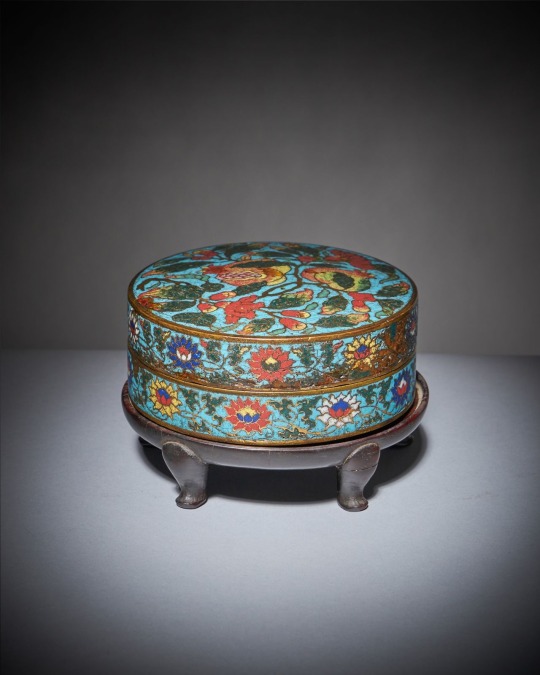
Pomegranates were a fertility symbol in 15th century China. Dreweatts
“When I first inspected the piece it looked too good to be true as 99.9% of Xuande marked pieces are later copies,” said Dreweatts expert Mark Newstead in a press release.
“It’s definitely a highlight of my career, I’ll probably never see anything as rare as this again, but never say never.”

The box features markings of Xuande, fifth Emperor of the Ming Dynasty. Dreweatts
Circular in shape and about 12 centimeters (4.7 inches) in diameter, the artifact features a design of ripe pomegranates, gold branches and blossoms. Pomegranates were a symbol of fertility in the 15th century, said the auctioneers.
This was the first time that the box had come to auction in 77 years after it was considered lost.
It was bought by Maj. Edward Copleston Radcliffe in 1946 and went unnoticed among less valuable pieces of his collection when he died in 1967.

This is the first time the box has appeared on the market in 77 years. Dreweatts
However, his family later sent the collection to Dreweatts, where specialists recognized its importance.
“Cloisonné enamel pieces from the early Ming period are exceptionally rare as production was strictly regulated by the Imperial Palace eunuchs,” Newstead said in a separate release.
Ming Dynasty encyclopedia sells for more than $9 million at auction -- 1,000 times the expected price
“The fact that it was discovered in a dust-filled cabinet in the attic of a family home amongst other less valuable pieces, where it had sat since its’ owners [sic] death in 1967 is extraordinary and we knew it would attract world-wide attention.”
Newstead said the auction, which took place on Thursday, saw “very strong” bidding between nine telephone bidders, with a private collector in Asia finally winning out.

The previous owner of the box, Maj. Edward Copleston Radcliffe. Radcliffe family
This is not the first time that a Ming Dynasty artifact has smashed its auction estimate.
In July 2020, two rare volumes of an ancient Chinese encyclopedia sold for more than €8 million ($9 million) at auction, more than 1,000 times the estimated price.
The encyclopedia, known as the Yongle Dadian, was originally commissioned by the Yongle Emperor, the third ruler of the Ming Dynasty, who reigned from 1402 to 1424.
0 notes
Text
A Vase Kept in an Ordinary Kitchen Turned Out to Be a Qing-Dynasty Artwork Worth Millions | Smart News
A Vase Kept in an Ordinary Kitchen Turned Out to Be a Qing-Dynasty Artwork Worth Millions | Smart News
The artwork’s last owner purchased it for just a few hundred pounds.
Photo courtesy of Dreweatts
When Mark Newstead first saw the blue-and-gold porcelain vase sitting in his friend’s kitchen in the late 1990s, he thought it looked familiar. Based on the colors, design, and shape of the vessel, the Asian ceramics and artworks consultant for auction house Dreweatts had a gut feeling it wasn’t any…

View On WordPress
0 notes
Text

Sir William Russell Flint (1880-1969) - The jade cushion
Tempera on paper. 19 x 29 inches, 48.5 x 74 cm.
Estimate: £25,000-35,000.
Sold Dreweatts, Newbury, Berks, 21 Feb 2024 for £34,000 + B.P.
92 notes
·
View notes
Text
Dreweatts Auction
Dreweatts' Fine Jewelry auction on July 7th will feature one tiara.
Phyllis Turner Graham's Diamond Floral Necklace Tiara by Carrington, circa 1910 - estimate 15,000 - 20,000 GBP

#tiara auction#Phyllis Turner Graham#United Kingdom#Portugal#floral tiara#diamond#convertible tiara#Carrington
262 notes
·
View notes
Text
A Vase Kept in an Ordinary Kitchen Turned Out to Be a Qing-Dynasty Artwork Worth Millions | Smithsonian
A Vase Kept in an Ordinary Kitchen Turned Out to Be a Qing-Dynasty Artwork Worth Millions | Smithsonian
Jane Recker
Daily Correspondent
May 27, 2022 1:53 p.m.
The artwork’s last owner purchased it for just a few hundred pounds. Photo courtesy of Dreweatts
The rare, blue-and-gold vessel was crafted in 18th-century China
When Mark Newstead first saw the blue-and-gold porcelain vase sitting in his friend’s kitchen in the late 1990s, he thought it looked familiar. Based on the colors, design, and…

View On WordPress
0 notes
Text
Rare 18th-century Chinese vase kept in kitchen sells for $2.5 million
Rare 18th-century Chinese vase kept in kitchen sells for $2.5 million
An extremely rare 18th-century Chinese vase sold for 1,449,000 pounds ($2,569,000) in England after spending the last few years in a kitchen.
Key points:
Dreweatts auction house said the vase was an “extraordinary example” of Qianlong porcelain
The vase sold for 10 times its estimate at auction
It features “unusual” enamelling techniques and a pattern not known on any other vases
Bought for “a…

View On WordPress
0 notes